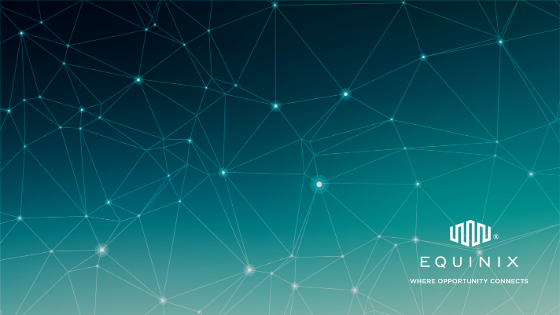Adopting a modernised, decentralised approach to digital infrastructure proved to be a successful way of working in 2020 when agility and adaptability were key. In 2021, embedding these altered ways of working for long-term success is what business leaders need to do to continue their upward trajectory. Members convened for a virtual working lunch in partnership with Equinix to discuss how to build digital advantage for business agility.
WHAT IS DIGITAL ADVANTAGE?
What does digital advantage actually look like in practice? This question is how Matt George, Director of Segment Marketing EMEA at Equinix began his presentation to members. Matt explained that while we are living through a period of disruption, most members know that digital transformation is not new at all. Most IT change was actually necessitated by key macro trends that emerged pre-pandemic. The most important thing to note when it comes to digital transformation is that 70% of new value created by the end of the decade will come from digitally enabled business models, making it an imperative for organisations to put digital strategy at the forefront of their overall business strategy.
Matt George explained that digital advantage is achieved by capabilities that enable businesses to address to four key points:
- Infrastructure is everywhere
- Infrastructure is an ecosystem
- It’s a hybrid world
- Ecosystems privately connect
Infrastructure is everywhere is the concept that the role of the singular, centralised corporate data centre is not fit for the demands of the digital world. There needs to be enough digital capability in a business to allow for the infrastructure to be everywhere. The infrastructure ecosystem point suggests that end-users need to be able to access the different tools across the organisation’s infrastructure. The hybrid world in organisations is something that was fast-tracked by the pandemic. Workloads are decentralising, and companies need to address this in a way that is dynamic. Finally, through private ecosystems, it is no longer just companies that are connecting to the cloud, connectivity needs to occur from enterprise to enterprise as well.
LESSONS FROM THE REAL WORLD
Members then moved into smaller discussion zones with digital leaders. There were three different discussion groups: Becoming a Digital Leader with Nigel Walder, COO of ClearBank, Rethinking Digital Architecture in Disrupted Markets with Claire Harvey, Key Account Manager at Red Bee Media and finally Building Agility in Retail with Scott Robertson, Principal Technical Solution Architect, Cloud at Co-Op.
In the first group, members discussed the importance of agility and speed in designing your digital capabilities. Nigel discussed the success of ClearBank in this area, as a cloud-only organisation. Members also discussed the cultural challenges that come with changing digital processes and how to ensure that end users are happy with the overall experience. The general consensus was that digital transformation does not have to be a huge project, it can be done in smaller, more incremental ways that make it easier for end users to adapt to.
In the second group, members focused on the work Red Bee are doing as an organisation that is collaborating with a huge ecosystem of different partners. Members discussed the value and cost of cloud - how businesses might know they have to go on a cloud journey but knowing the real costs and value-adds to the business are the most important aspects. There was also a discussion around the speed with which things have been done now due to the pandemic: there is less inertia with projects and things can be completed faster.
In the final group, members discussed culture once again. When encouraging user adoption of a new technology, the culture surrounding an organisation is often more important than the technology itself. Also, how corporate finance comes into play in these cultures and how it can help accelerate the decisions made around digital transformation. There was also a discussion around connectivity and how enhancing connectivity can help affect change in an organisation’s network going forward.
Overall, the discussion around digital advantage and how to enable that through digital transformation was full of important takeaways for members. Notably, the importance of an organisations’ culture in the uptake of new technology as well as ensuring smooth user experience across the board is vital to building that trust with end users. 2021 is the year to build on the important changes brought about by 2020.
This event was held in partnership with Equinix, a cloud and infrastructure solutions provider.





Leave a Comment